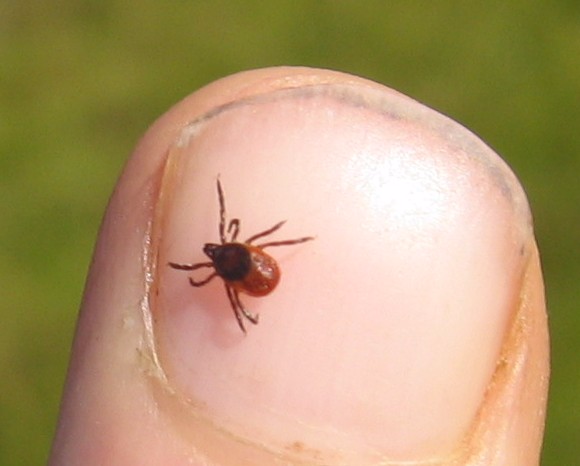Ford’s Pest of the Month: Deer Tick
. Posted in extermination - 0 Comments
 The life cycle of the deer tick (family Ixodidae) will last two years. The eggs, totaling approximately 3,000, are laid in the spring. The larvae, practically invisible to the naked eye, emerge in several weeks feeding on white-footed deer mice, voles, chipmunks and other small animals. They drop off their host, go into a resting or pupa stage and emerge the following spring as a molting nymph. They again feed on larger animals, including humans, until they reach the adult stage that fall season. They remain on their host fully engorged until spring, drop off, lay eggs and so, the cycle begins again.
The life cycle of the deer tick (family Ixodidae) will last two years. The eggs, totaling approximately 3,000, are laid in the spring. The larvae, practically invisible to the naked eye, emerge in several weeks feeding on white-footed deer mice, voles, chipmunks and other small animals. They drop off their host, go into a resting or pupa stage and emerge the following spring as a molting nymph. They again feed on larger animals, including humans, until they reach the adult stage that fall season. They remain on their host fully engorged until spring, drop off, lay eggs and so, the cycle begins again.
The deer tick is the main carrier of Lyme disease, which is a bacterial infection. The symptoms are: a ring shaped bull’s eye rash appearing within the first 4-20 days, fever, chills, headache, stiffness in joints and fatigue are all symptoms which may mimic the symptoms of arthritis and the flu.
Lyme disease is preventable by taking the right precautions. Where long sleeves and pants and spray your clothing with an appropriate insect repellent. If an attached tick is found, use tweezers to grasp the tick firmly and pull gently, otherwise body parts will remain in the skin causing infection.
Geoff Ford, Vice President
Ford’s Hometown Services




